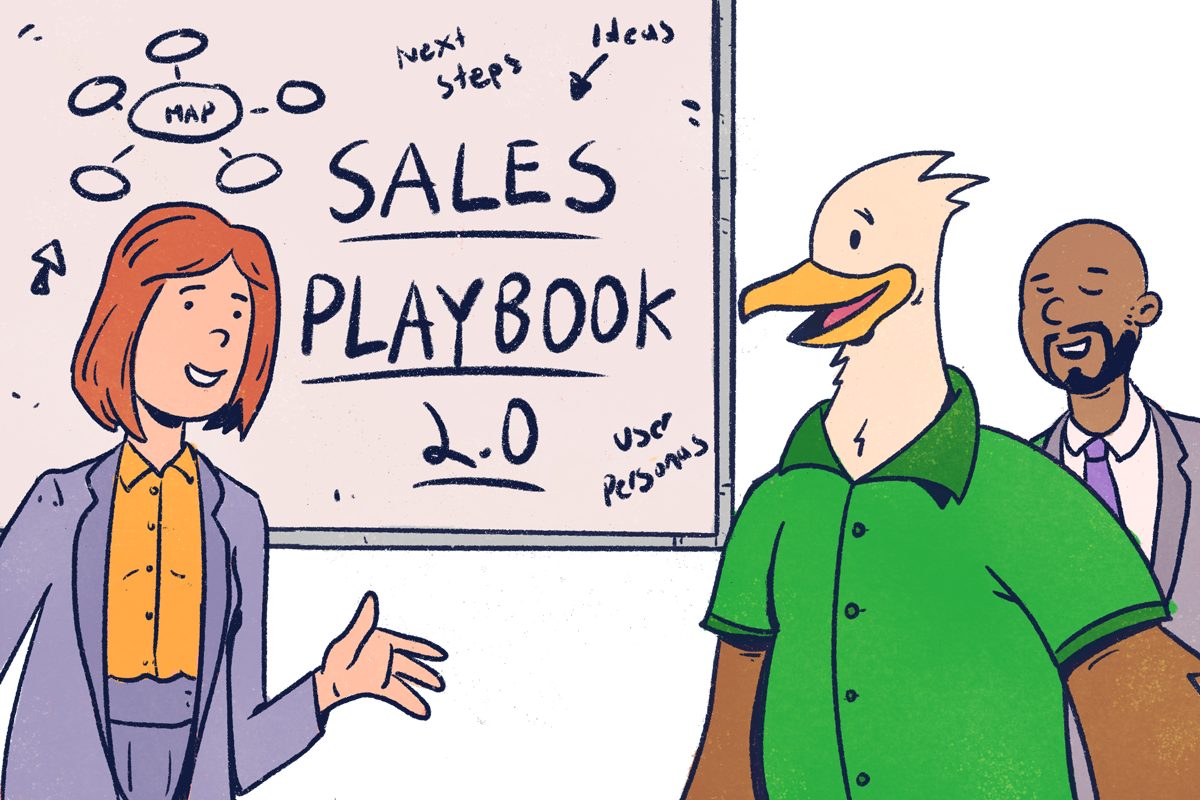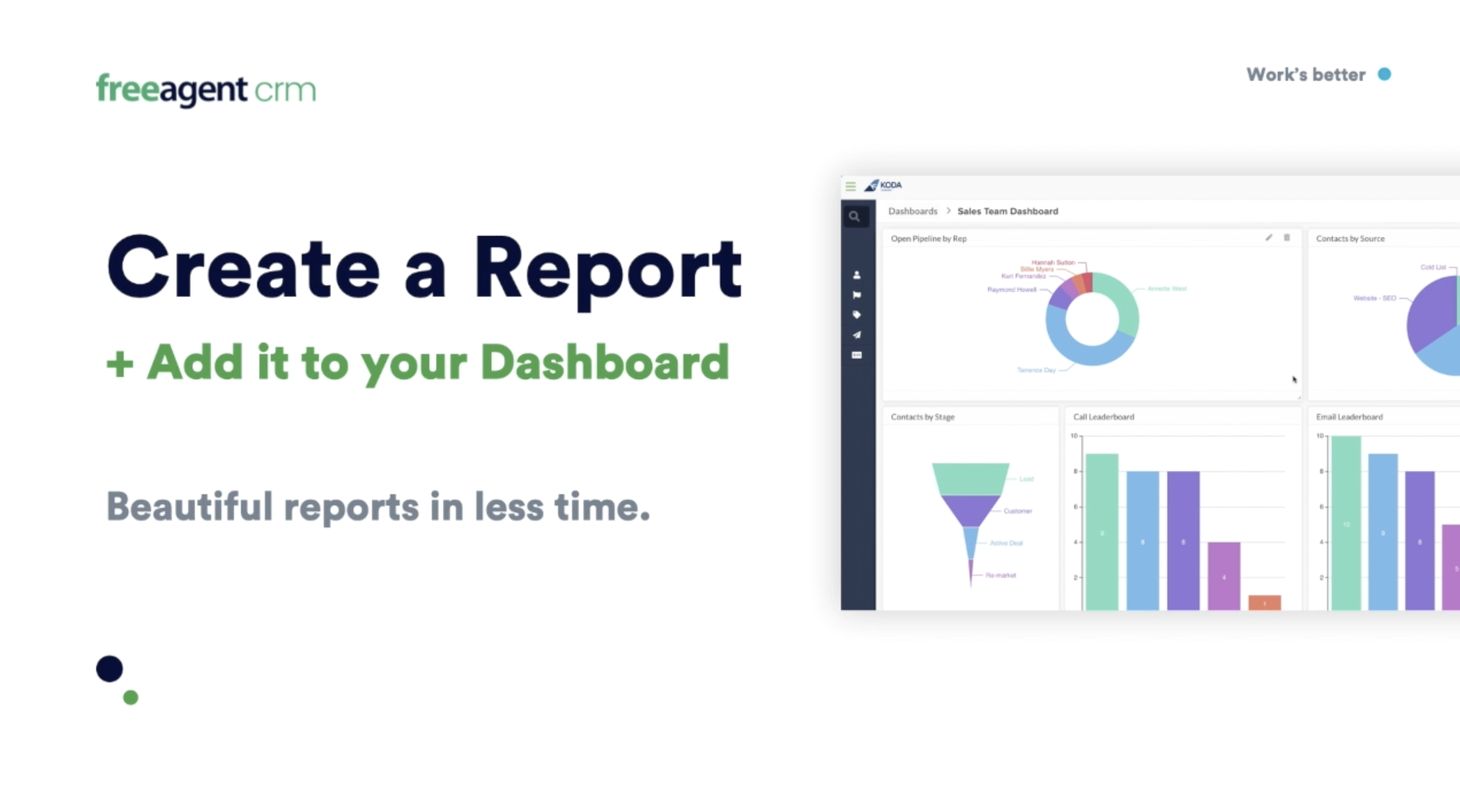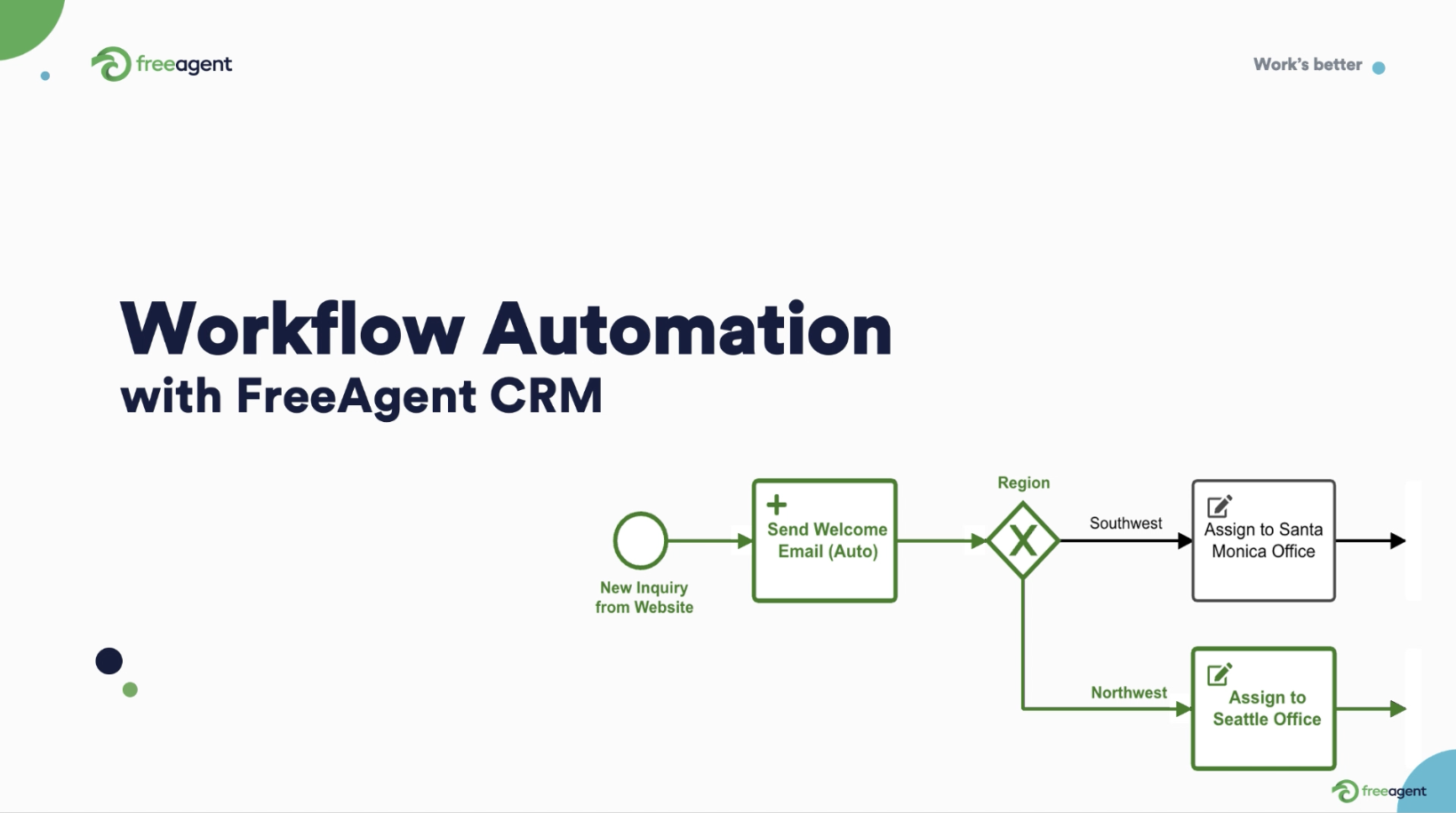
What is a sales playbook?
A sales playbook is an internal guide laying out best practices for sales reps and other sales team members.
Your sales playbook maps out:
- What your sales organization is all about (value proposition)
- How your team sells (sales process)
- What you’re selling (product description)
- How to price it (including quoting and contracts)
- Whom you’re up against (competitors)
Think of your sales playbook as an internal ‘bible’ — a constantly updated handbook containing all your rules.

Why you need a sales playbook: 10 key benefits
There are many benefits to guiding your sales efforts with an effective sales playbook. A dynamic, collaboratively designed sales playbook can help you to:
- Create repeatable processes among sales reps
- Reference sales enablement content better
- Illustrate success through a customer story
- Onboard each new sales rep faster
- Assist sales training and coaching
- Drive a better buyer experience
- Leverage sales tools better
- Exceed sales goals
- Improve win rates
- Increase revenue
These benefits compound onto each other. Repeatable processes lead to faster onboarding, which leads to easier sales training.
Sales training leads to a better customer experience, which leads to more revenue — ad infinitum.
What happens without a sales playbook?
As a potential customer moves through each sales stage in your funnel, they’re expecting a unified buying experience. Without a sales playbook guiding efforts from your end, chaos reigns:
- You get misaligned communications across reps and clients, while your reps rely on hunches, best guesses, and gut feelings to sell.
- In new territories, sales progress and business growth are delayed. Without a repeatable sales play, sales managers in new territories end up flying blind and making unnecessary mistakes.
Finally, a missing sales playbook results in slower onboarding and training and hampers sales performance in the long run.

Who needs a sales playbook?
Sales playbooks are essential for teams of all sizes, but there are four groups, in particular, that benefit greatly from creating or leveraging sales playbooks:
- The new sales leader: As a new VP of Sales or Chief Revenue Officer, you’re looking to steer the ship in the right direction. This is difficult without a good sales playbook in place — especially in the first 100 days — to guide your sales strategy.
- Startup founders: When hiring the first few reps, founders need a sales playbook to help onboard and guide each salesperson on their growing sales team. A good sales playbook also defines their buyer persona and sales methodology. At the startup level, sales plays evolve faster due to the sharper learning curve.
- Sales coaches: As a sales coach working with a sales manager or team of reps, you’ll either work with an existing playbook or help craft a new one. An effective sales playbook template shortens the sales cycle of each client you work with.
- Sales reps entering new territories: Entering the unknown is challenging — more so without an existing sales playbook to guide the team. A sales playbook can help sales teams land and expand in new territories more smoothly, leading to faster sales success.re

Effective sales playbook template: What to include
We’ve outlined the importance of a sales playbook, but what exactly should you include in it? Best practices suggest the following elements:
- Elevator pitch: A one to two line description of what your company does, sells, and to whom (i.e., value proposition)
- Key benefits: The top reason prospects should buy your offerings and how it solves their Jobs To Be Done
- Product features: The nitty-gritty of how your product works and how it helps (helpful to answer more technical questions)
- Buyer persona: A collection of user stories, Jobs To Be Done (JTBDs), and demographic information that defines your ideal customer profile
- Competitor information: Who you’re up against and how you’re better than or different from them
- Accounts, segments, and territories: A brief description of the types of accounts you’re targeting, the territories your sales org sells in, and the different customer segments within those audiences
- Sales process: Define the different aspects of your sales process, including:
- Pricing and buying process (Fixed? Flexible?)
- Contracts (Monthly? Quarterly? Annually?)
- Sales engagement and channels
- Prospecting and qualification
- Lead scoring and routing
- Demos and handoffs
- Reporting and KPIs
- Forecasting
- Sales templates: High-impact emails, sales decks, and sales call talk tracks can help your team craft winning outreach campaigns that drive results
- Objection handling: Common sales objections you may get from a qualified lead and effective responses to them
- Sales resources: Where to find other useful resources that may help with creating sales content, building landing pages, and more, including:
- Sales enablement assets: Everything you need to sell more easily and overcome sales objections from prospects (see our sales enablement guide)
- Knowledge bases: Where people can self-serve product guides and troubleshooting information
- Brand guides: Your corporate identity document, logos, colors, and fonts
- FAQs: Common questions prospects or internal staff members may ask
- Sales tools: Apps and platforms that make work easier for your team

3 tips to improve your sales playbook and attain maximum sales effectiveness
It’s helpful to remember the following three tips when building out your sales playbook:
- Build it collaboratively: Running a sales operation touches every aspect of the sales cycle. A sales playbook needs input from everybody on your sales team, from reps to managers. Involve your product marketing team to provide feedback on templates, product features, and your ideal customer profile.
- Embed it into your sales tools: It’s pointless crafting a sales playbook that merely collects digital dust. Embed your playbook in your sales tools: your CRM, onboarding platforms, and internal knowledge bases. Make it easily accessible to each sales representative.
- Update it often: A good sales playbook isn’t static — you must update it regularly. As your sales templates grow stale, product features change, and ideal customer profile evolves, reflect those changes in your sales playbook. This ensures your sales personnel is always running on the latest ‘firmware.’

FreeAgent CRM helps you run an effective sales play
A CRM platform is a great way to embed and leverage your sales playbook to achieve sales success.
Your sales playbook delivers customer success while your CRM makes it easy to find contact information.
FreeAgent CRM helps you follow your sales playbook closely. That’s because:
- It’s built to provide context on both your accounts and sales process
- It enables collaborative work among different teams
- It helps you send off pre-saved email templates
Try FreeAgent CRM for free today and takes your sales game to the next level.







